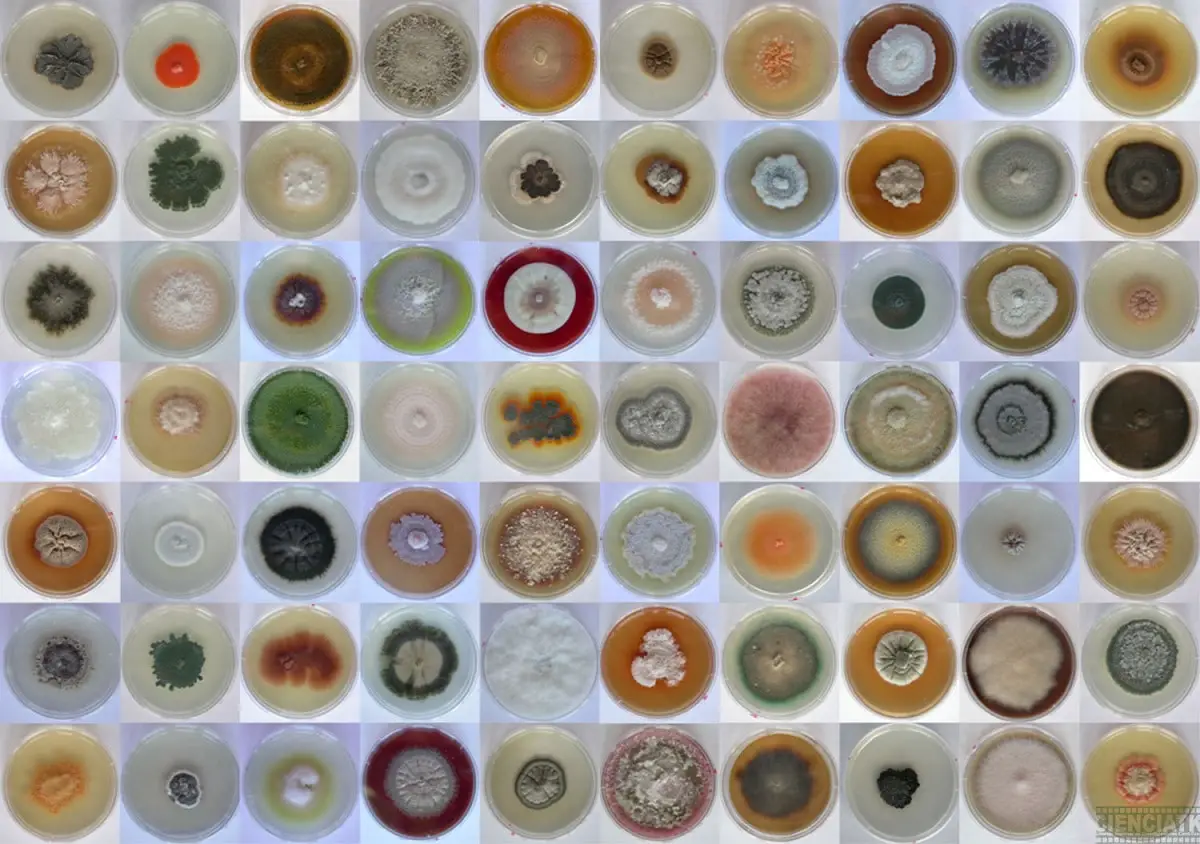

Plants can have fungi that inhabit them but that do not have any type of activity and do not cause apparent symptoms. These mushrooms are known as endophytes. These are parasites that host a plant and the relationship between them is of great importance.
In this article we are going to tell you about all the characteristics about endophytic fungi and the important aspect of the relationship of these fungi with the host plants.
Key features


These fungi are capable of inhabiting a plant without us seeing any apparent symptoms of disease. The importance they have for the relationship that exists with the plant in which it is hosted is that these fungi are capable of producing bioactive metabolites. In addition, they can modify different mechanisms that the plant has for its defense. Thus, endophytes can increase the survival of both themselves and the plant.
These microorganisms are becoming increasingly important and, therefore, there are many studies about them. There are some recent studies that are focusing on showing their ability to produce various active compounds. These compounds are responsible for increasing the protection of the plant where they are housed. Thanks to its defenses, it has greater resistance to attack by pathogens and herbivores. This makes the plants serve to be able to have a new way to obtain various precursors or molecules that can be used in agriculture and medicine.
As expected, if we are able to grow plants with greater resistance to pests and diseases, we can reduce the use of nitrogen fertilizers, herbicides, pesticidesetc. This will also mean an improvement in agricultural performance and a decrease in the impacts that it has on water pollution.
These endophytic fungi are microorganisms that spend most of their time colonizing the different tissues of the plant. Studies are stating that these microorganisms do not cause obvious damage to the plant. This is due to an association between the cost and the benefit of what the plant obtains from hosting the microorganisms. They have been found in all vascular plants, algae, mosses and grasses from habitats near the Arctic to the tropics. They have also been found in various humanized agricultural lands.
We can say that the greatest biodiversity is in the ecosystems of temperate and tropical forests. Well, it has been shown that In these plants there is also a significant amount of endophytic fungi.
Importance of endophytic fungi


The most important thing to be studied is the relationship between the endophytic fungus and the host plant. This type of relationship can range from mutualism to pathogenesis. In the relationship of mutualism there is a benefit on the part of both organisms. Both the fungus benefits from hosting the plant and the plant benefits from the fungus living in it. However, if we analyze the pathogenesis we can see that the fungus benefits but the plant harmed.
In the relationship that exists between both organisms we can see that secondary metabolites are produced that are potentially toxic. This means that some endophytic fungi can produce virulence factors. On the other hand, the plant increases the production of both its mechanical and biochemical defenses. The relationship between the virulence factor on the part of the fungus and the increase in defense on the part of the plant means that both have a balanced antagonistic relationship. This means that both produce a mutually beneficial relationship. This balance depends on the intensity of the virulence of the fungus, the amount of defense the plant has.
These aspects have various variations depending on the influence of environmental factors and the stage of development of both organisms. The mutualistic relationship occurs when the virulence of the fungus and the defense of the plant are in continuous balance. If the fungus it is more virulent than what the plant is capable of defending itself, the damaged plant will be. On the other hand, if the plant has a higher defense, the fungus will not be able to stay in the plant for a long time.
Ecology of endophytic fungi
And it is that these mushrooms also have an important ecological role. What these fungi do when they host a plant is take nutrients and protection from it. This means that they can survive in an ideal environment to be able to reproduce. By introducing being a plant it can benefit it since it increases tolerance to stress. In addition, by producing secondary metabolites through this relationship, it provides greater protection and resistance to the plant against herbivores and phytopathogenic microorganisms.
The endophytic fungus that is capable of producing other secondary metabolites that inhibit a particular pathogen or even other endophytic fungi. This is its reason for being in interspecific competitiveness. However, they are not capable of inhibiting other organisms in the same environment. There are some endophytic fungi capable of influencing the growth and development of some species that live around them. Typically these species are competitors for both space and nutrients.
This relationship has been observed mainly through some interactions between endophytic fungi and grasses. It is also necessary to analyze that various woody plants, be they trees or shrubs, this occasion has not occurred so frequently. What the studies try to verify is whether endophytic fungi are capable of contributing to the protection of the host against biotic factors. These factors include pathogens and herbivores. An attempt is also made to see if it is possible to have greater protection against abiotic agents. These agents collect saline and thermal stress and the presence of metals, among others.
It has been observed that these endophytes can contribute to the protection of the plant through these mechanisms:
- Direct: they use secondary metabolites with antipathogenic activity.
- Indirect: they increase the expression of both chemical and physiological defense mechanisms of the plant.
- Ecological: it is due to the occupation of the ecological niche. They act like predators.
I hope that with this information you can learn more about endophytic fungi.
